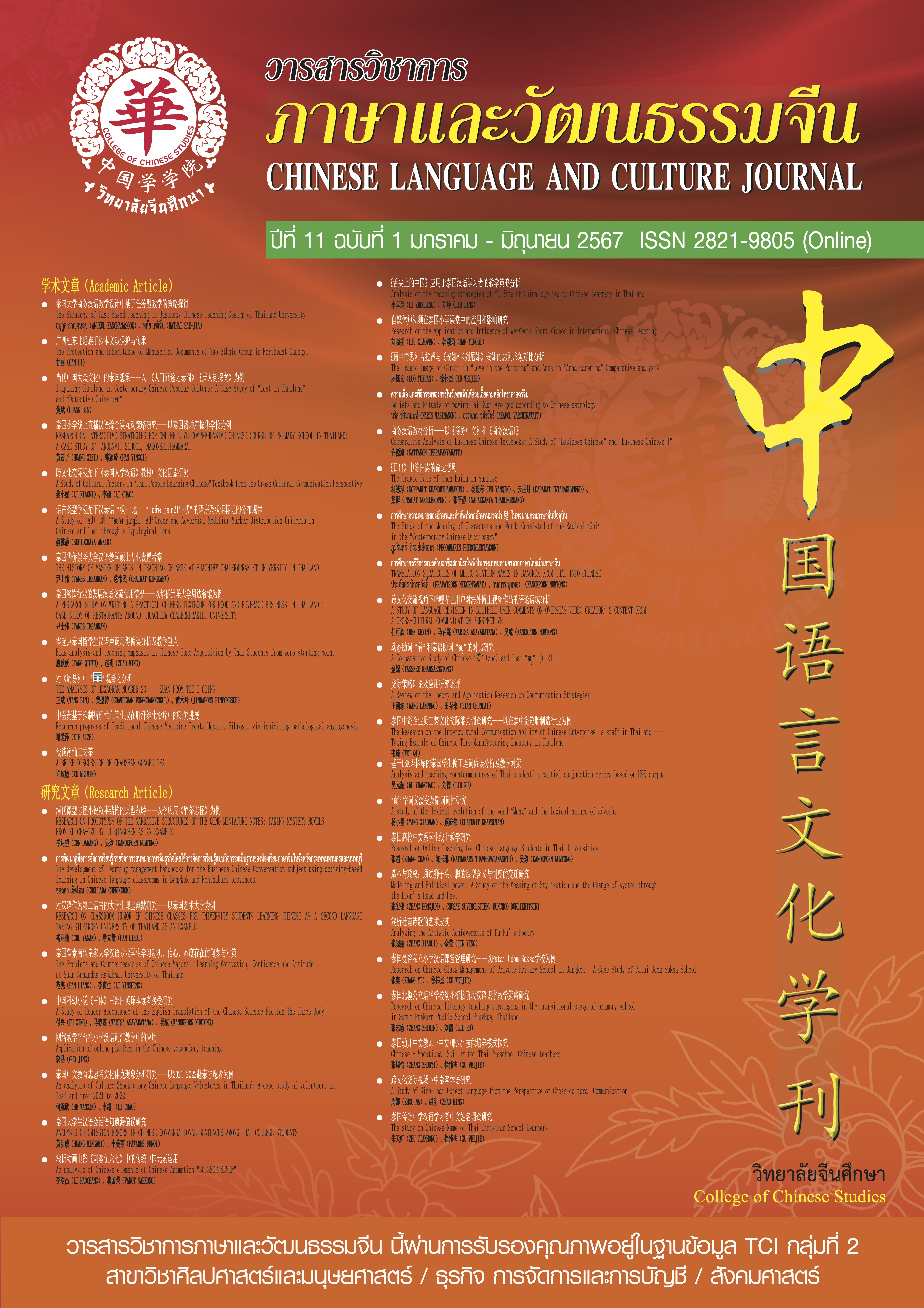The Study of the Meaning of Characters and Words Consisted of the Radical “Gui” in the “Contemporary Chinese Dictionary”
Keywords:
Chinese Characters, ghosts, culture, gui, 鬼Abstract
This study is a qualitative and quantitative study regarding the meaning of characters and words in the radical “gui” from the Current Chinese Dictionary (《现代汉语词典》), the objective of this study is to study the meaning of “ghost” that is reflected through the characters and words in the Current Chinese Dictionary. From the study, it is found that the radical"gui" contains a number of characters that have "gui" as their meaning, and currently there are 12 letters used (Excluding the full letter and various written letters) in total. This number of letters can form a total of 103 new words. The meanings can be divided into 8 types: 1. Meanings related to ghosts, ghosts. devil, spirit 2. secretive, mysterious 3. evil 4. used to refer to someone who behaves bad or bad habit, and call someone who has bad or evil behavior. 5. Morale, spirit, mind. 6. Illness or abnormal symptoms in general. 7. Intelligent, sharp, quick-witted, 8. Others. It is found that most of these words still have meanings related to "ghosts" and have developed meanings from "ghosts" as well.
References
ราชบัณฑิตยสถาน. (2556) พจนานุกรมฉบับราชบัณฑิตยสถาน พ.ศ. 2554. กรุงเทพฯ : ราชบัณฑิตยสถาน.
高畅.(2022).与“鬼”有关的见解否定表示研究: [硕士学位论文]. [D]. 湖北: 会被师范大学.
黄交军、李国英. (2017). 认知语言字理论背景下《说文解字》“鬼”之文化探秘. [j]. 地方文化研究. (第5期), 41-63.
刘壮.(2024). 《说文解字》“鬼”部所反映的归文化及演变. [J]. 汉字与文化, (4):114-116.
史慧超. (2016). 从《说文解字》“鬼”部字看鬼的起源原型. [j]. 兰州教育学院报, 32(3): 16-17.
吴静如.(2022).汉字文化学视野下的“鬼”及其文化内涵. [J]. 品味·经典.
张君.(2011).现代汉汉语含“鬼”词语此一的因与分析。新疆教育学院学报.
张律.(2015). 汉语“鬼”词群研究: [硕士学位论文]. [D]. 南京: 南京师范大学.
Downloads
Published
How to Cite
Issue
Section
License
Copyright (c) 2024 Chinese Language and Culture Journal

This work is licensed under a Creative Commons Attribution-NonCommercial-NoDerivatives 4.0 International License.
บทความที่ได้รับการตีพิมพ์เป็นลิขสิทธิ์ของวารสารภาษาและวัฒนธรรมจีน มหาวิทยาลัยหัวเฉียวเฉลิมพระเกียรติ
บทความใน “วารสารวิชาการภาษาและวัฒนธรรมจีน” เป็นทรรศนะของผู้เขียนโดยเฉพาะ กองบรรณาธิการไม่มีส่วนในความคิดเห็นในข้อเขียนเหล่านั้น




